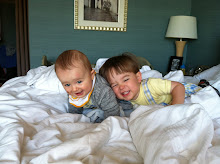Laos has to be the most beautiful place on the earth. Picture magnificent mountains covered with lush rain forest and a strong river flowing down the middle. Then picture this for miles, only occasionally broken by small villages with thatched roof homes, farmers working the rice paddies that line the sides of some hills and long boats, quietly breaking through the water with villagers on their way to work. This was our view for the past 2 days as we moved down the Mekong on a “slow boat” which resembles a long house boat and was reserved entirely for Shane and I! We left Thailand by water taxi and headed over to Huang Xai, the border town of Laos. The customs office was partially underwater from the heavy rains but that didn’t seem to stop the backpackers from flowing into town.
Laos was the last of the southeast Asia countries to open it’s doors to the West and tourism. As a result, as well as its communist government, the country is nearly untouched by the outside world. Our first stop in Laos was Pak Beng, the largest town on the western side of Laos. We stayed in the very first hotel built in the town! It was beautifully done with traditional Laos’s architecture and accommodations, an excellent Laos’s dinner was served and the staff was professional and spoke excellent English. However, several things were there to remind us of the poverty that still prevails: no air-conditioning in the room, the town’s 1 road was unpaved and very muddy from all the rain and we had to take a handmade raft to cross the road because it was flooded! There was no pretense of tourism here – it’s sink or swim, literally!
Our second stop was supposed to be Kamu lodge, a type of home stay where we would stay in a private lodge in a village. However, the lodges were underwater from the rain so we trekked onward toward Luang Prabang! Along the way we made 3 stops. The first was at a Hmong village. The villagers were incredibly kind and stopped their work to take pictures with us, show us there handiwork and take us through their homes. The homes were made of bamboo and thatched roofs, with areas boarded off indoors for the bedrooms, a small kitchen with a fire on the floor and a small area for eating and sitting. They were larger than we had expected and very clean. There was no running water or electricity and each villager worked very hard in the fields and around the village. The man we spoke with had left the village to work for the forest and recreation division but was sent back by the government to help the Hmong organize their farming and create a Hmong bank. We were followed throughout the village by a small group of children who giggled at everything we did.
Secondly we stopped at the Pak Ou Buddha caves, natural caves that were carved out near the mouth (Pak) of the Ou river. The native Laotian’s believed the caves to be sacred and filled them with Buddha images; there are around 400 small statues in the cave. The cave was forgotten and lost for many years, but rediscovered in the early 20th century and is now a spot for the faithful Buddhist traveler to stop and offer sacrifice, as well as a look back in time for the tourist. After the cave we stopped at “whisky village,” a “lowlilaos” village that specializes in making rice wine and whisky. Lowlilaos are the Laos people who make there living near the water. There homes are built on the ground, which differentiates them from the Khmer people who build higher up the hillside with elevated homes. The wine and whisky were better than expected and we purchased a few bottles for home.
We arrived in Luang Prabang in time to check into our hotel and peruse the Hmong night market (extensive market taking over several streets with everything from food to groceries to electronics) and have dinner at the international restaurant recommended by our guide, L’ elephant. It was delicious and we went to bed full and ready to explore the crown jewel of Asia; Luang Prabang.
Wednesday, August 13, 2008
Subscribe to:
Post Comments (Atom)


No comments:
Post a Comment